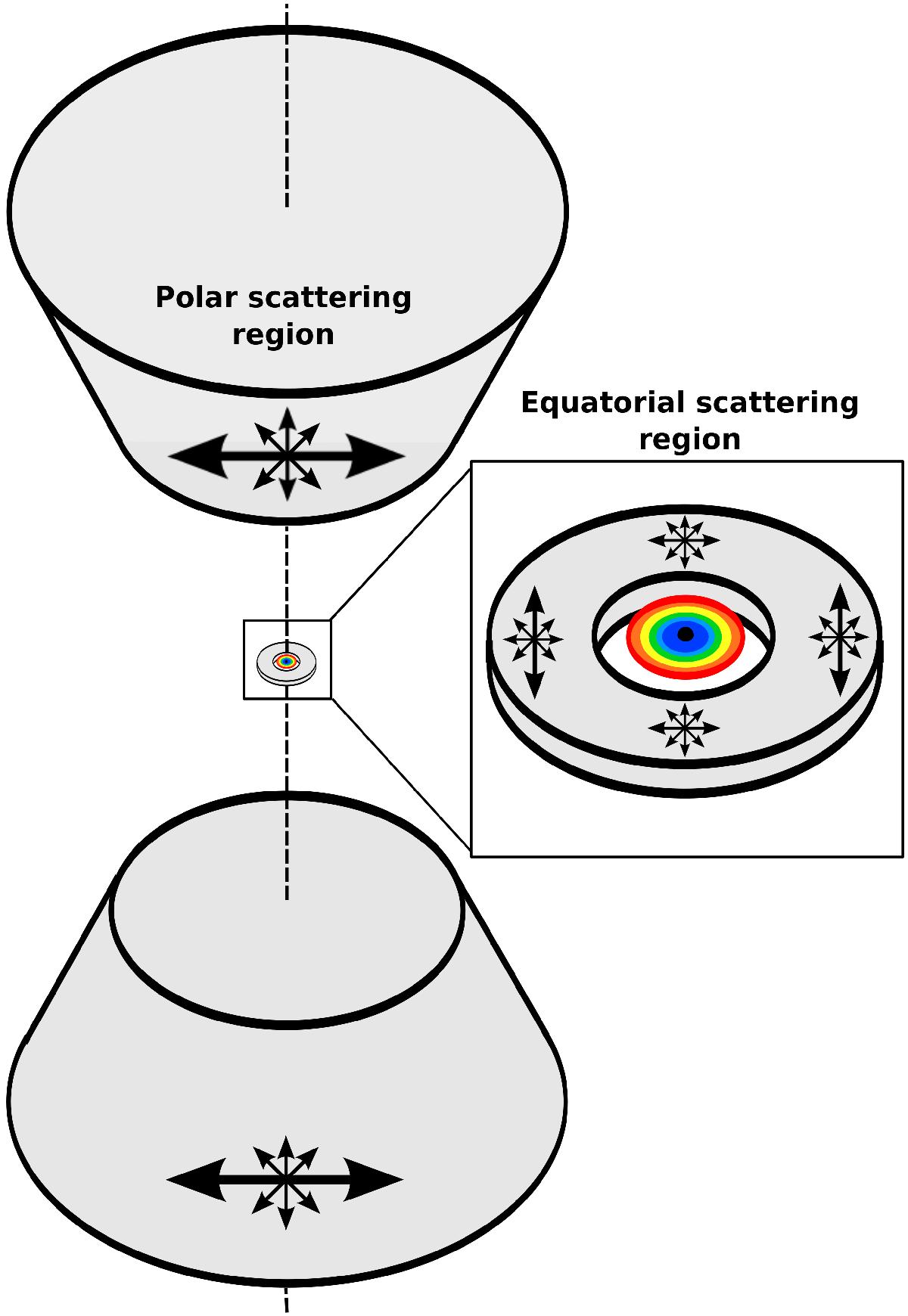Fig. 2

Schematic picture (not to scale; adapted from Smith et al. 2004) illustrating the model adopted for interpreting the quasar continuum polarization. The equatorial scattering region is compact and magnified by microlensing together with the central continuum source (the accretion disk), while the polar scattering region is more extended and not magnified. The system axis is inclined with respect to the line of sight to the observer. The arrows indicate the direction of the resulting polarization projected onto the plane of the sky for each scattering region. The equatorial scattering region produces low polarization predominantly parallel to the system symmetry axis, while the polar scattering region produces high polarization perpendicular to the system axis.
Current usage metrics show cumulative count of Article Views (full-text article views including HTML views, PDF and ePub downloads, according to the available data) and Abstracts Views on Vision4Press platform.
Data correspond to usage on the plateform after 2015. The current usage metrics is available 48-96 hours after online publication and is updated daily on week days.
Initial download of the metrics may take a while.


